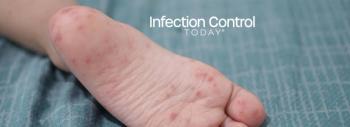
Three Cases of Human Infection with H7N9 Virus are Reported to WHO
On March 8, 2014, the National Health and Family Planning Commission (NHFPC) of China notified the World Health Organization (WHO) of three additional laboratory-confirmed case of human infection with avian influenza A(H7N9) virus.
A 27-year-old man from Fuzhou City, Fujian Province. He became ill on February 20, was admitted to a hospital on February 27, and is currently in stable condition. The patient has a history of exposure to poultry.
A 70-year-old man from Meizhou City, Guangdong Province. He became ill on February 27, was admitted to a hospital on March 3, and is currently in critical condition. The patient has a history of exposure to poultry.
A 76-year-old woman from Chaozhou City, Guangdong Province. She became ill on March 1, was admitted to a hospital on March 6, and is currently in critical condition. The patient has a history of exposure to poultry.
The Chinese government has taken the following surveillance and control measures: strengthen surveillance and situation analysis;
reinforce case management and treatment; and conduct risk communication with the public and release information.
The previous report of avian influenza A(H7N9) virus detection in live poultry exported from mainland China to Hong Kong SAR shows the potential for the virus to spread through movement of live poultry, at this time there is no indication that international spread of avian influenza A(H7N9) has occurred. However as the virus infection does not cause signs of disease in poultry, continued surveillance is needed.
Further sporadic human cases of avian influenza A(H7N9) infection are expected in affected and possibly neighboring areas.
Should human cases from affected areas travel internationally, their infection may be detected in another country during or after arrival. If this were to occur, community level spread is unlikely as the virus does not have the ability to transmit easily among humans. Until the virus adapts itself for efficient human-to-human transmission, the risk of ongoing international spread of H7N9 virus by travelers is low.
WHO advises that travelers to countries with known outbreaks of avian influenza should avoid poultry farms, or contact with animals in live bird markets, or entering areas where poultry may be slaughtered, or contact with any surfaces that appear to be contaminated with faeces from poultry or other animals. Travelers should also wash their hands often with soap and water. Travelers should follow good food safety and good food hygiene practices.
WHO does not advise special screening at points of entry with regard to this event, nor does it currently recommend any travel or trade restrictions.
As always, a diagnosis of infection with an avian influenza virus should be considered in individuals who develop severe acute respiratory symptoms while travelling or soon after returning from an area where avian influenza is a concern.
WHO encourages countries to continue strengthening influenza surveillance, including surveillance for severe acute respiratory infections (SARI) and to carefully review any unusual patterns, in order to ensure reporting of human infections under the IHR (2005), and continue national health preparedness actions.
Source: WHO
Newsletter
Stay prepared and protected with Infection Control Today's newsletter, delivering essential updates, best practices, and expert insights for infection preventionists.






